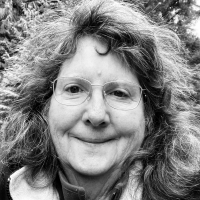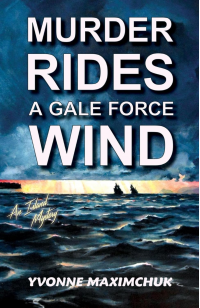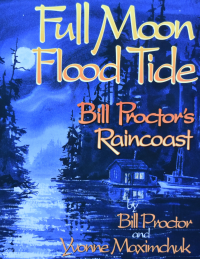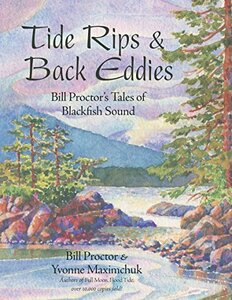Yvonne Maximchuk Interview Published on: 30, Sep 2024
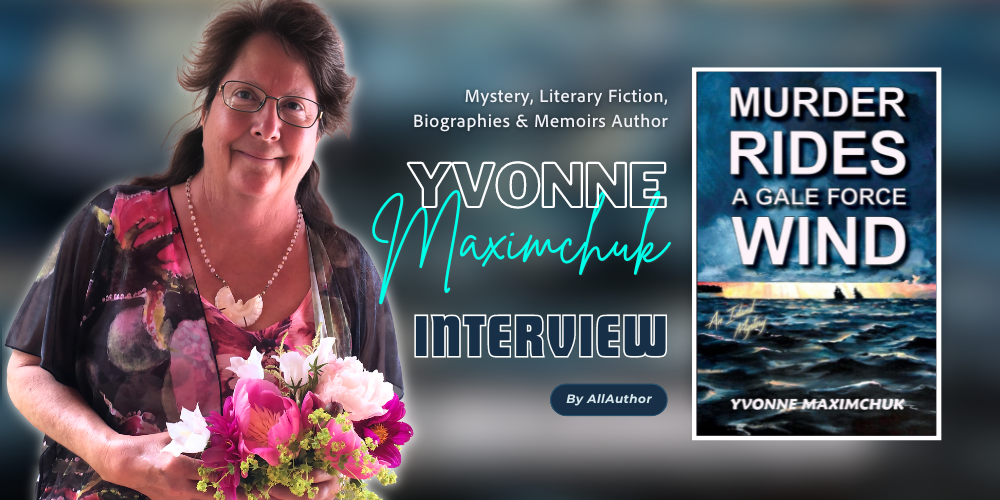 How does the unique setting of your off-grid island homestead influence your writing and artwork?
How does the unique setting of your off-grid island homestead influence your writing and artwork?
Living on Gilford Island entirely pervades every aspect of my life, and my creative output in every medium. The content of my memoir, ‘Drawn to Sea’, colouring book, ‘Colour the British Columbia Coast’ and novel, ‘Murder Rides a Gale Force Wind’ are all completely embedded in my location among the inlets and islands of the Broughton Archipelago on the BC coast.
Can you describe a typical day on your homestead and how it fuels your creative process?There is no such thing as a typical day although I do try for certain objectives! I am an early riser luckily and need variety in the daily structure. I divide my day roughly into four periods of activity. If working on a book I will write first, before I can be interrupted, from 7-9:30 am. Late morning I paint or make pottery depending on what calls me most loudly. After a late lunch I may work on framing, business or housekeeping activities and late afternoon I like to garden or go run around in my boat. Any of these activities may be interrupted by a studio visitor or humpback or killer whales out on the water, in which case I go out to get an ID shot for the researchers in my area.
What inspired you to choose a life off the grid, and how has this lifestyle impacted your creative work?Love brought me here, as related in my memoir, ‘Drawn to Sea’. I was a single mom raising two children near Vancouver, working my way toward a living as an artist. From time to time I would run away to sea with my ‘holiday man’, now my husband, who fished prawns and worked his way up the coast. In 1986 we made the move here together, with my kids, to a floathouse in Echo Bay. The scenery and coastal lifestyle were a perfect match for me; I had found my place.
How do the seasons and weather of the BC Coast affect your writing routines and artistic endeavors?Weather, tide and seasons run everything! I paint en plein air (on location) spring and summer, if it is bright and calm. I go out in my 16 foot speedboat to the islands around me. I work in the painting studio on larger projects in winter, and in the pottery studio if it is pouring rain. I fire the kiln on a sunny day so I can work in the garden while I tend it.
Can you share a memorable encounter with wildlife that has significantly influenced your book, "Full Moon Flood Tide"?This book is mainly Bill Proctor’s life experience however we had many hours of discussion during the creation of it and I illustrated the book as well as wrote some of the text. My favourite place here is a small group of islands called the Burdwood Group where Billy and I do a monthly waterbird survey (24 years now) for Bird Studies Canada. On one occasion we observed a wolf swimming and it was that event which caused me to urge Billy to do an entry which included the animals we had seen as well as the birds. I wanted to draw that wolf.
How do the natural landscapes and wildlife of the BC Coast shape the themes and narratives in your stories and artworks?One of the things I am good at is drawing, and using words to describe everything I see and experience, and through those activities I seek to experience and express the fundamental spirit of this place. The world I live in is indescribably rich in every way and somehow out of that richness the stories and paintings grow alongside the wildflowers, trees, sea and wild life. I am gripped by the fate of starfish, the birth of a new baby whale, wildflowers such as the ‘single delight’ whose fleeting blooms grace the forest or the windblown rocks in May. I am blessed with the beautiful union of repetition with variety - the two basic things humans need- everywhere I turn.
How do you balance the solitude of island life with the need for social interaction and community?I take time to cultivate the friendships I’ve made over the years, host those friends and art retreat guests in our home, write real letters. I also travel fairly often on Vancouver Island to teach workshops or give myself ‘getaways’ of a few days to a month each winter.
What role do the creative and resourceful people of the BC Coast play in your novel, "Murder Rides A Gale Force Wind"?My characters are entirely informed by the real-life qualities of mariners I know or have met. Creativity, not just as an artist, is a powerful component of what is necessary to survive and thrive in this environment. There is a distinct element of risk which long-term residents must come to terms with.
What are the biggest challenges you face living in such a remote location, and how do you overcome them?The weather is the biggest challenge, having to cross a 28 mile stretch of water, Queen Charlotte Strait, to get to health services, e.g. an abscessed tooth can get you into trouble if if it is blowing a gale. We have a network of a few neighbours to call on as well as Canadian Coast Guard and 911 services to medevac people in dire straits.
In addition to writing, what other forms of art do you engage in, and how do they complement each other?I paint in watercolour, acrylic on canvas, draw with a variety of media, cut mats and do my own framing in my painting studio. I hand build and throw pottery and create glazes from raw material, load and fire the propane kiln. Each creative activity seems seamless, not separate to me, all the elements available like art tools to use! My husband and I cleared our house site on our property and all the wood was milled by our neighbours. I constructed our bedroom screen door and installed all the cedar siding. Building a homestead is kind of an artwork in itself.
How does the process of creating art in various mediums differ for you when inspired by the wilderness?I think it takes me away from the stimulation of people and what they create and press into and onto you. I go onto the land, the islands and the creeks, rivers and sea, and every tiny bit, every iota of that environment is gripping. Vast encyclopaedic bodies of knowledge are just waiting there to thrill my seeking eye, hand and brain, waiting to be discovered, to inspire, to educate me. I need that.
How do sustainability and self-sufficiency on your homestead reflect in your writing and artistic themes?The difficult elements of life here, as anywhere, are the elements of conflict which grab the reader’s attention. What do you do when your boat breaks down in the middle of an oncoming storm or you have to walk up into the woods to find the break in the waterline or a stranger pulls up to your dock when you are home alone? I can’t leave out all that stuff I’ve learned!
Are there any local myths, legends, or histories that have inspired your work?Mostly real history. I salmon fished commercially with my neighbour and friend Bill Proctor (who shows up as Back Eddy in Murder Rides) and during long fishing trips I taught him how to write. We co-authored two books; ‘Full Moon Flood Tide’ and ‘Tide Rips and Back Eddies’ - what Billy knows about the area in which he was born and lived his entire life. Many of the historical anecdotes in that book inform the characters in the novel, plus several more from research I did about the history of fishing and canneries on the BC coast in general.
What upcoming projects are you most excited about, and how are they inspired by your island life?I’ve begun a new novel, the working title is ‘Gone With Flowers’; a post-apocalyptic story with an element of magic realism, set in 2094, also here in my home territory, featuring a similar demographic of indigenous and non-indigenous characters dealing with survival after what is deemed ‘the final war’. There really was a guy who built a bomb shelter in Echo Bay in the 60’s and I’ve used that bomb shelter in the new novel. I’ve also begun a 30 x 40 inch acrylic on canvas painting of another local island (!) to which I dedicate 10-12 hours a week.
When did you join AllAuthor? What has your experience been like?I actually can’t remember when I joined, pretty sure it was this year, 2024. I’ve struggled with it, the same as I have struggled with the art marketing sites I’ve joined. An upwelling force compels me to create – in some form. When I wake up in the morning I want to paint or write or make pottery, I do not want to be on the computer, I find it difficult to learn all the computer things I need to do to make the most of those opportunities, and difficult to dedicate the time it takes to become comfortable and competent at social media. I still make most of my book sales from personal contact by approaching bookstores and libraries to set up readings, taking a table at local farmers or seasonal markets and have sold over 1000 copies of “Murder Rides a Gale Force Wind” since I published it.
Share Yvonne Maximchuk's interview
Yvonne Maximchuk lives on a self-built, off-grid island homestead on the rugged coast of British Columbia, accessible only by boat. Immersed in the wilderness of islands and inlets, her daily life, writing, and artwork are deeply inspired by the untamed beauty of the region. Surrounded by wildlife like whales and marine mammals, as well as a community of creative and resourceful locals, Yvonne draws upon the natural world and the unique spirit of coastal life in all of her creations.
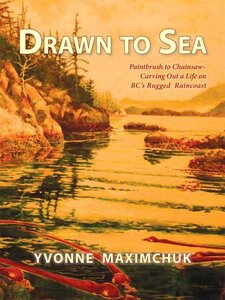 Drawn to Sea: Paintbrush to Chainsaw—Carving Out a Life on BC’s Rugged Raincoast
Genre: Biographies & Memoirs
Drawn to Sea: Paintbrush to Chainsaw—Carving Out a Life on BC’s Rugged Raincoast
Genre: Biographies & Memoirs
